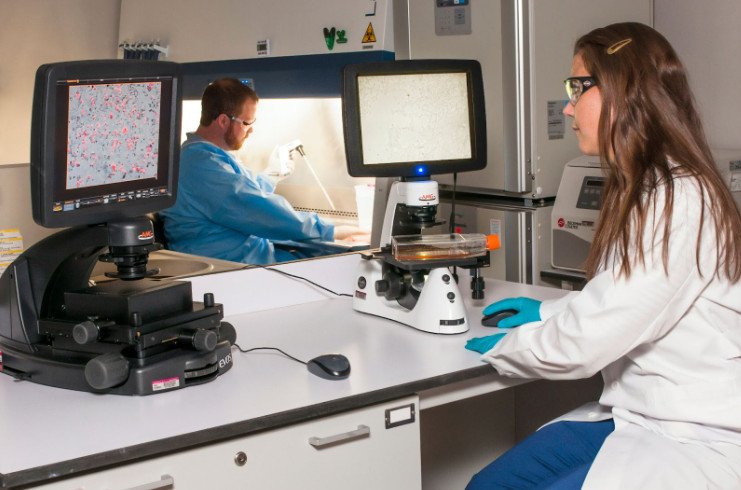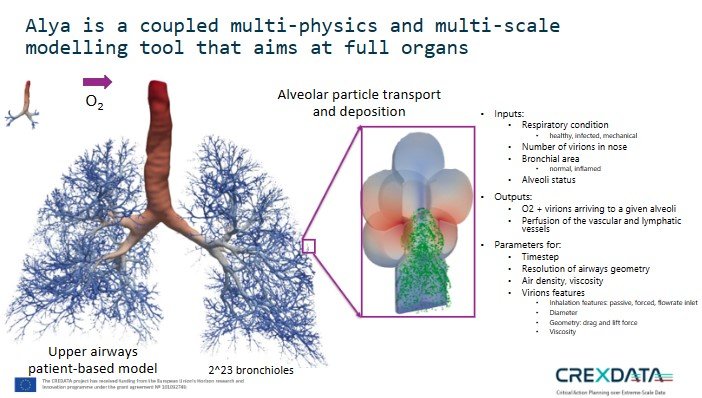USE CASES
Health crisis use case

The COVID19 pandemic has been dramatic for the public health of millions of people and the economic wellbeing of nations. The work of many professionals in this pandemic has proven that fast, reliable predictions can help save lives and mitigate economic strains. Computational biology has helped in two main areas in this pandemic: a) epidemiological models that aim at having digital twins of the movement and infection of populations; b) drug assays that aim at having a digital twin of the treatment of patients.
To control and manage a worldwide crisis such as the COVID-19 pandemic, we aim to resolve complex and heterogeneous problems including, but not restricted to:
- the detection of outbreaks and the tracking of the COVID-19 pandemic;
- the design and evaluation of effective pharmaceutical and non- pharmaceutical interventions;
- the study of viral evolution for the detection of emerging mutations of clinical relevance; and the prediction of potential drug targets as well as the development and repurposing of novel therapeutic strategies.
All these problems have in common the need for high-quality, massive, real-time data.
Modelling health crisis
Crexdata has focused on two main scenarios for modelling health crisis: epidemiological modelling and multiscale lung infection modelling. The first scenario focuses on the spread of infectious diseases at the population level, considering factors such as demographics, mobility, social behaviour, interventions and vaccination with real-life epidemiological data. The second scenario zooms in on the individual level, simulating the interactions between the virus, the immune system and the lung tissue with patients’ data.
-
Epidemiological models
Mechanistic epidemiological models will be used to build a toolbox that aims to have digital twins that mimic the movement and infection of populations. These models become even more relevant when dealing with the spread of an unknown infectious pathogen, such as SARS- CoV-2, as it allows us to evaluate and monitor early warning mechanisms and indicators during the time when non- pharmacological interventions are necessary.


-
Multiscale models
Mechanistic multiscale models will be used to build a toolbox aimed at having a digital twin for the treatment of patients. CREXDATA will build a multiscale, multicellular, spatiotemporal model of lung tissue infected by the SARS-CoV-2 virus. This COVID19 infection simulator will be a first version of a digital twin that will allow testing of different interventions in patients, allow them to receive treatments, such as vaccines and virus-infection-targeting drugs.
By combining these two scenarios, Crexdata can provide a comprehensive picture of the dynamics and outcomes of health crises, as well as the potential impacts of different strategies and policies. Crexdata also allows users to access and visualise various data sources, such as case reports, hospitalisations, deaths, mobility patterns and environmental factors.
Crexdata is designed to be flexible and adaptable, so that it can be applied to different types of health crises, not only COVID-19. The platform is also open and collaborative, inviting researchers, policymakers, healthcare professionals and the general public to contribute and benefit from its features.

